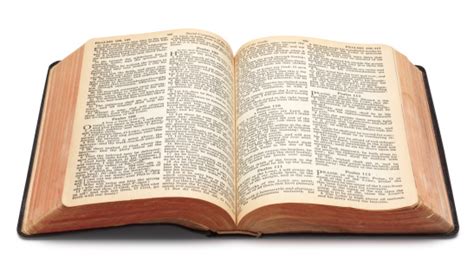EarlyActs
Senior Member
- Joined
- Jun 24, 2023
- Messages
- 3,900
- Reaction score
- 493
- Points
- 83
I have recently exchanged with a few scientists who are evangelicals here, but who may not realize they are 'neo-orthodox.' That means that they don't accept some of early Genesis as historical, but only for its theology, as though these things can be split.
In this post, I would like to revisit their questions on a new topic within early Genesis: the image of God. This is most often used as a general statement of human dignity.
There are two things in the early text, however, that pull us another direction. 1st, that the term 'tohu wa-bohu' means that a destructive event has taken place, for ex., as found in Jer. 4 and the destruction of Jerusalem. Details are scant. This does not settle well with the above readers and there is some denial that the expression can mean this, only that it means it was unfinished.
2nd, when God makes mankind, he is made in the image of God. This expression also may go in an unexpected direction--to be a representative of God. Images were used around middle east kingdoms to define boundaries. The earth was God's. This needed to be marked.
Now when we combine 1 with 2, we see that something was destroyed that was unacceptable to God, and there needed to be representation of God as the owner in this place that was subjected to ruination.
This, then, would be the "theology" of early Genesis on these two points. I'm a bit puzzled how we cannot have historic material when these items are the meaning of the passage.
This might seem palid until we go to the 10 Commands. In the 10 Commands, we have the repetition that God created the earth, etc., in 6 days and the 7th was meant to rest and worship Him. But that is not the only theme brought forward: man is not to make images of God. We should see the sharp contrast: man is an image of God (the lord of the world), but is tempted to make images of God, which are lies; they are false. This began verbally with Satan misrepresenting God, ie, creating an image of him.
To me, these hints show a conflict before the creation event (that made the biosphere inhabitable for mankind), about which we have very few details, but are solid links of history to meaning in early Genesis.
By way of continuity of the whole Bible, we should remind ourselves that Jesus was made (as far as humanity needed a demonstration) Lord and Christ in the resurrection. The world is His, says Ps 2 and 110. (The apostles did not start their Acts 4 prayer in Ps 2; they started in a psalm that asserted God made it all and was owner.) Anyone not accepting this is on notice, through the resurrection, that the Son will dash them to pieces on the last day.
The scholarly NET has this note for Acts 4:
This may indirectly answer the question of why some Nephilim appear after the cataclysm. What God needed to do in the cataclysm was destroy the illusion that someone else was owner; it is not that God dislikes the earth. He restored that he is Master by getting rid of the bulk of the Nephilim. In the SW US, in about 1800, a last group (to my knowledge) of giants was defeated because of their barbarity by the Payute tribe. As in Ps 104, the cataclysm is something of a clue as to what happened in the creation itself; certain lines overlap or blur the two.
In this post, I would like to revisit their questions on a new topic within early Genesis: the image of God. This is most often used as a general statement of human dignity.
There are two things in the early text, however, that pull us another direction. 1st, that the term 'tohu wa-bohu' means that a destructive event has taken place, for ex., as found in Jer. 4 and the destruction of Jerusalem. Details are scant. This does not settle well with the above readers and there is some denial that the expression can mean this, only that it means it was unfinished.
2nd, when God makes mankind, he is made in the image of God. This expression also may go in an unexpected direction--to be a representative of God. Images were used around middle east kingdoms to define boundaries. The earth was God's. This needed to be marked.
Now when we combine 1 with 2, we see that something was destroyed that was unacceptable to God, and there needed to be representation of God as the owner in this place that was subjected to ruination.
This, then, would be the "theology" of early Genesis on these two points. I'm a bit puzzled how we cannot have historic material when these items are the meaning of the passage.
This might seem palid until we go to the 10 Commands. In the 10 Commands, we have the repetition that God created the earth, etc., in 6 days and the 7th was meant to rest and worship Him. But that is not the only theme brought forward: man is not to make images of God. We should see the sharp contrast: man is an image of God (the lord of the world), but is tempted to make images of God, which are lies; they are false. This began verbally with Satan misrepresenting God, ie, creating an image of him.
To me, these hints show a conflict before the creation event (that made the biosphere inhabitable for mankind), about which we have very few details, but are solid links of history to meaning in early Genesis.
By way of continuity of the whole Bible, we should remind ourselves that Jesus was made (as far as humanity needed a demonstration) Lord and Christ in the resurrection. The world is His, says Ps 2 and 110. (The apostles did not start their Acts 4 prayer in Ps 2; they started in a psalm that asserted God made it all and was owner.) Anyone not accepting this is on notice, through the resurrection, that the Son will dash them to pieces on the last day.
The scholarly NET has this note for Acts 4:
- Acts 4:24 tn Or “Lord of all.”sn The use of the title Master of all (δεσπότης, despotēs) emphasizes that there is a sovereign God who is directing what is taking place.
This may indirectly answer the question of why some Nephilim appear after the cataclysm. What God needed to do in the cataclysm was destroy the illusion that someone else was owner; it is not that God dislikes the earth. He restored that he is Master by getting rid of the bulk of the Nephilim. In the SW US, in about 1800, a last group (to my knowledge) of giants was defeated because of their barbarity by the Payute tribe. As in Ps 104, the cataclysm is something of a clue as to what happened in the creation itself; certain lines overlap or blur the two.

